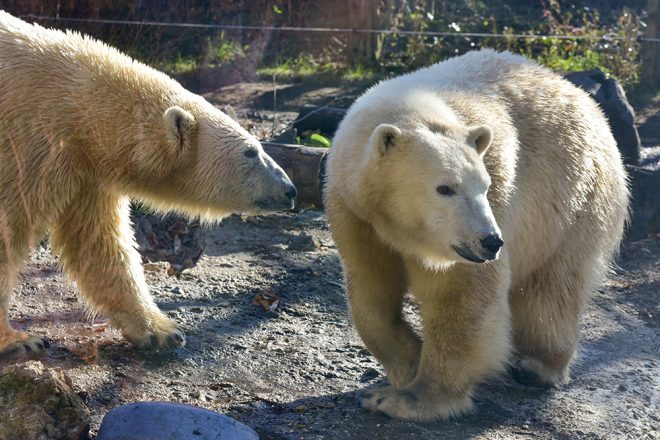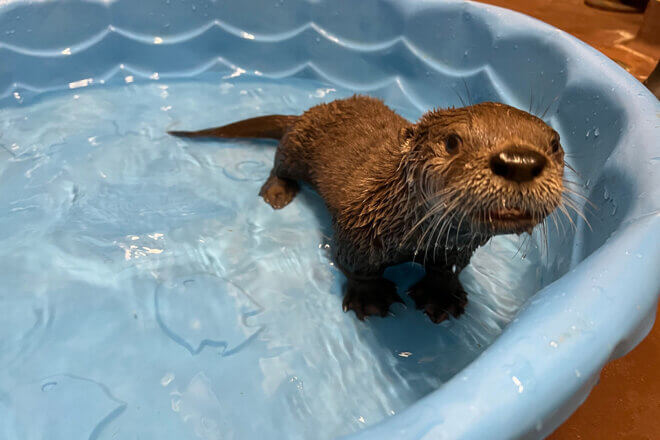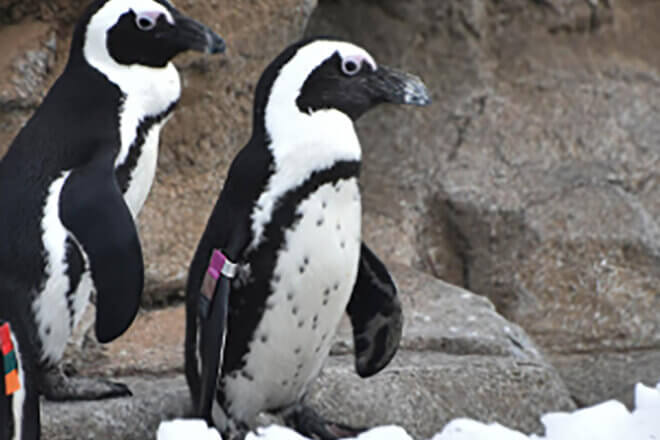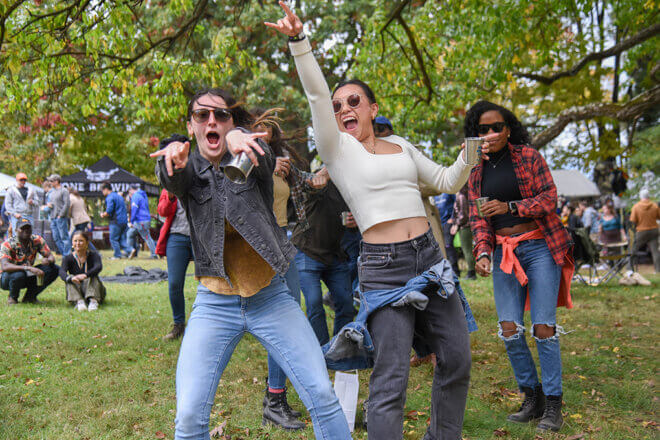Here at the Zoo, we care for two young polar bear half-sisters, Neva and Amelia Gray, at Polar Bear Watch. The bears came to us from Columbus Zoo & Aquarium in October 2018 at the recommendation of the Species Survival Plan. Polar Bear Watch is also home to grizzly bear sisters, Nova and Nita, as well as female bald eagle, Vega.
Polar bears are one of our Signature Animal Programs (SAP). We promote the conservation of polar bears through education, research, and ongoing collaboration with Polar Bears International (PBI), the world’s leading polar bear conservation organization. PBI is dedicated to saving polar bears by saving their sea ice habitat, which is rapidly receding due to global warming. The Zoo supports the work of PBI through funding, education programs, and staff expertise and involvement.
Learn more about Polar Bear conservation
During your visit, you may have some questions about the polar bears. You can find information below straight from our animal care team who work and care for the polar bears every day!
Why is the polar bear doing that?
We are aware that the bears present unusual behaviors at times like walking on the pool edge or swimming a lot and we monitor them very closely to adjust management plans for them throughout each day.
We have cameras that allow us to see all of the bears’ habitat so that we can evaluate exactly how the bears behaved on a 24 hour cycle. Based on the behaviors we observe, we create specific management plans daily. This includes things such as adjusting their diet, creating unique enrichment strategies to promote natural behaviors, and engaging in training sessions with each bear. We also are conducting a long term behavioral research study to assess their behavior objectively and to allow us to continually improve their diet options, their habitat features, and our management plans to promote natural behavior.
Please be assured that both our Animal Care Team and our Veterinary Team are working very hard to understand the exact needs of the bears and to provide the best care and positive welfare every day. While you may not see these processes directly, please know that we are always working to advance our knowledge and enhance our options for the animals under our care.
Why does the polar bear look so different?
At different times of the year, guests might notice that the bears look different – this is normal as polar bears are incredibly seasonal in every aspect of their lives. Their metabolism changes with the seasons and they will lose or gain weight as this happens. They tend to gain weight in the spring time and then slim back down as the warmer summer weather arrives.
A polar bear’s fur only grows once a year in the springtime. They begin shedding their previous coat usually along their head and neck first and then down the rest of their body. The new hair is slow to come in and this can leave them looking patchy. Their black skin (used to help absorb heat from scattered light in their hollow hair) may be visible until their new coat fully grows in by the end of summer.
Because a polar bear’s coat does not grow all year round, if they lose fur from rough housing with each other, they will continue to look patchy until the new hair begins growing next spring. We monitor them very closely and make sure that their weight is healthy to help them maintain their body temperature if they start to lose their coat before the weather really warms up.
Additional Resources:
- Polar bear conservation at the Zoo
- Polar bear animal information page
- Polar Bears International
- Adopt a polar bear
- Support the Zoo






Share this article